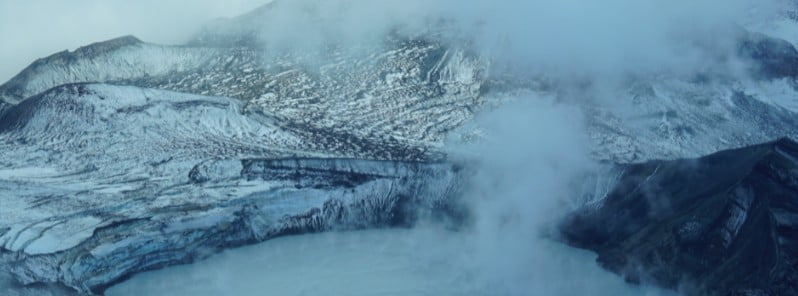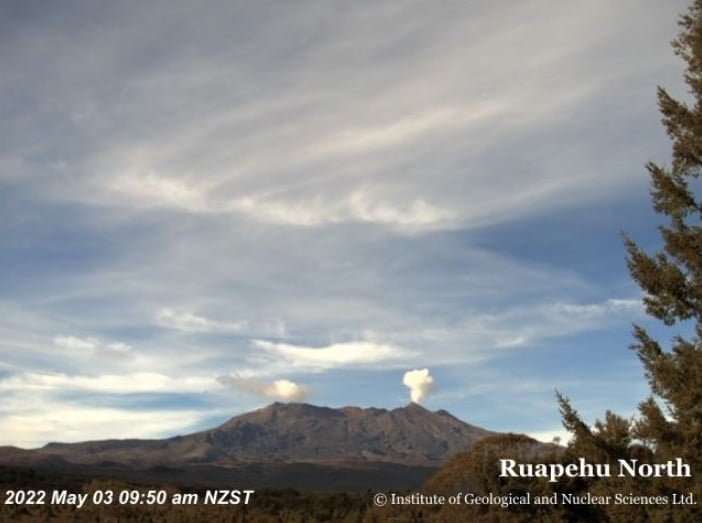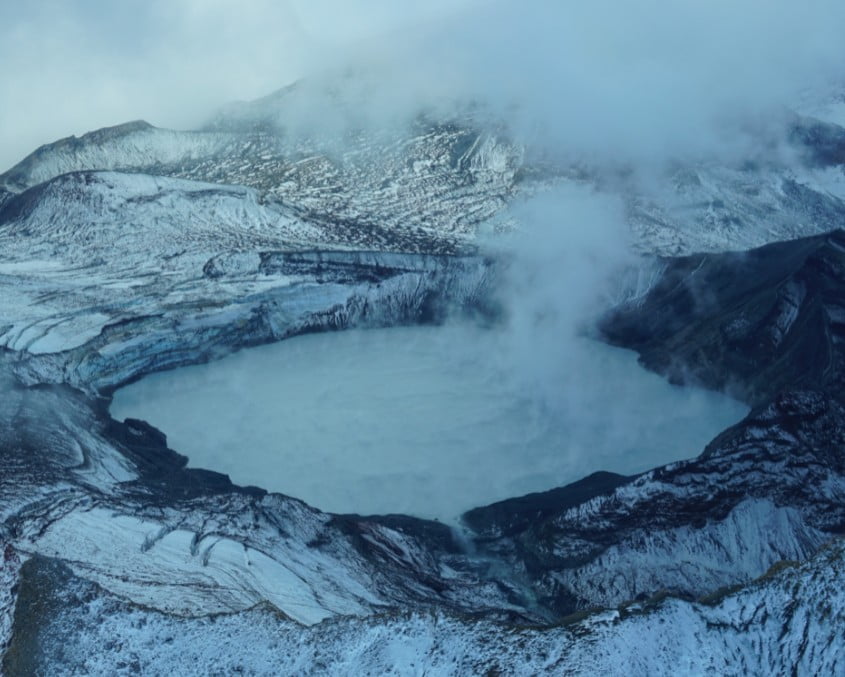Steam plume visible at Ruapehu volcano, New Zealand

A steam plume was seen above Ruapehu’s Crater Lake at around 09:45 LT on May 3, 2022 (21:45 UTC on May 2). No seismic or acoustic activity accompanied the plume appearance, indicating the steam plume was not generated by strong activity in the lake.
The plume ascended slowly to ~1 to 1.5 km (3 280 – 4 920 feet) above the summit area and remained visible until around 22:30 UTC.1
Images of the plume indicate that atmospheric conditions favored cloud formation, as the cloud was also forming elsewhere around the volcano. The plume was seen widely around the volcano.

While no seismic or acoustic activity accompanied the plume appearance, indicating the steam plume was not generated by strong activity in the lake, GeoNet said it cannot rule out that very minor activity occurred, which is why their scientists conducted an observation flight early this afternoon.
Observations from that visit indicate that the central vent continues to be actively upwelling, and the lake level is marginally higher.

The current lake temperature is approximately 39 °C (102.2 °F). In the past, lake temperatures this high, combined with cool and calm atmospheric conditions, have generated visible steam plumes above the lake.
Laboratory analysis of the latest Crater Lake fluid samples shows no clear indication that magma is interacting with the hydrothermal system beneath the lake.
The Volcanic Alert Level remains at Level 2 and the Aviation Color Code at Yellow.
Geological summary
Ruapehu, one of New Zealand’s most active volcanoes, is a complex stratovolcano constructed during at least four cone-building episodes dating back to about 200 000 years ago.
The 110 km3 (26.4 mi3) dominantly andesitic volcanic massif is elongated in a NNE-SSW direction and surrounded by another 100 km3 (24 mi3) ring plain of volcaniclastic debris, including the Murimoto debris-avalanche deposit on the NW flank.
A series of subplinian eruptions took place between about 22 600 and 10 000 years ago, but pyroclastic flows have been infrequent. A single historically active vent, Crater Lake, is located in the broad summit region, but at least five other vents on the summit and flank have been active during the Holocene.
Frequent mild-to-moderate explosive eruptions have occurred in historical time from the Crater Lake vent, and tephra characteristics suggest that the crater lake may have formed as early as 3 000 years ago. Lahars produced by phreatic eruptions from the summit crater lake are a hazard to a ski area on the upper flanks and to lower river valleys.2
References:
1 Steam plume visible at Mt Ruapehu, volcanic unrest continues: Volcanic Alert Level remains at Level 2. – GeoNet – May 3, 2022
2 Ruapehu – Geological summary – GVP
Featured image credit: GeoNet

Commenting rules and guidelines
We value the thoughts and opinions of our readers and welcome healthy discussions on our website. In order to maintain a respectful and positive community, we ask that all commenters follow these rules.